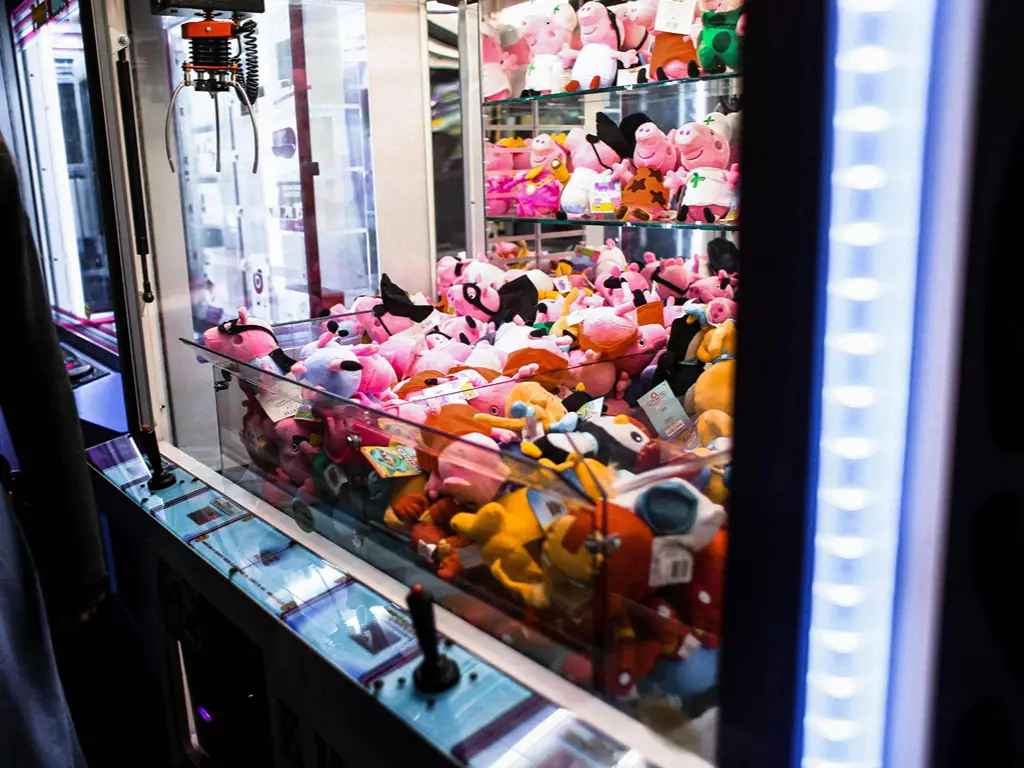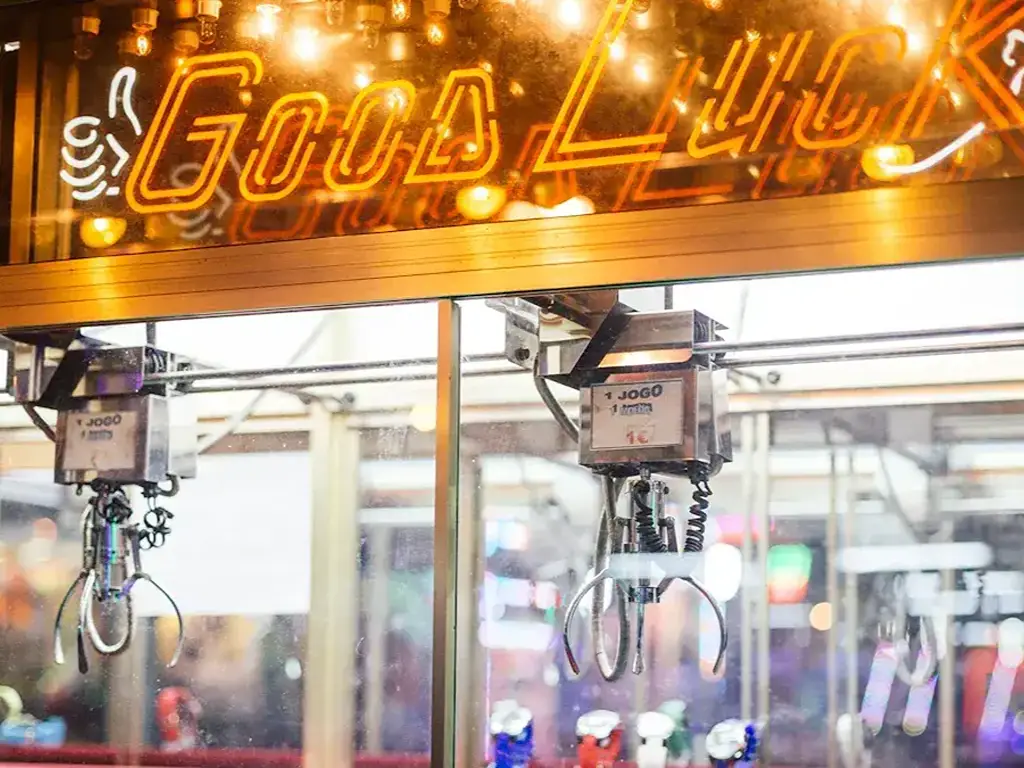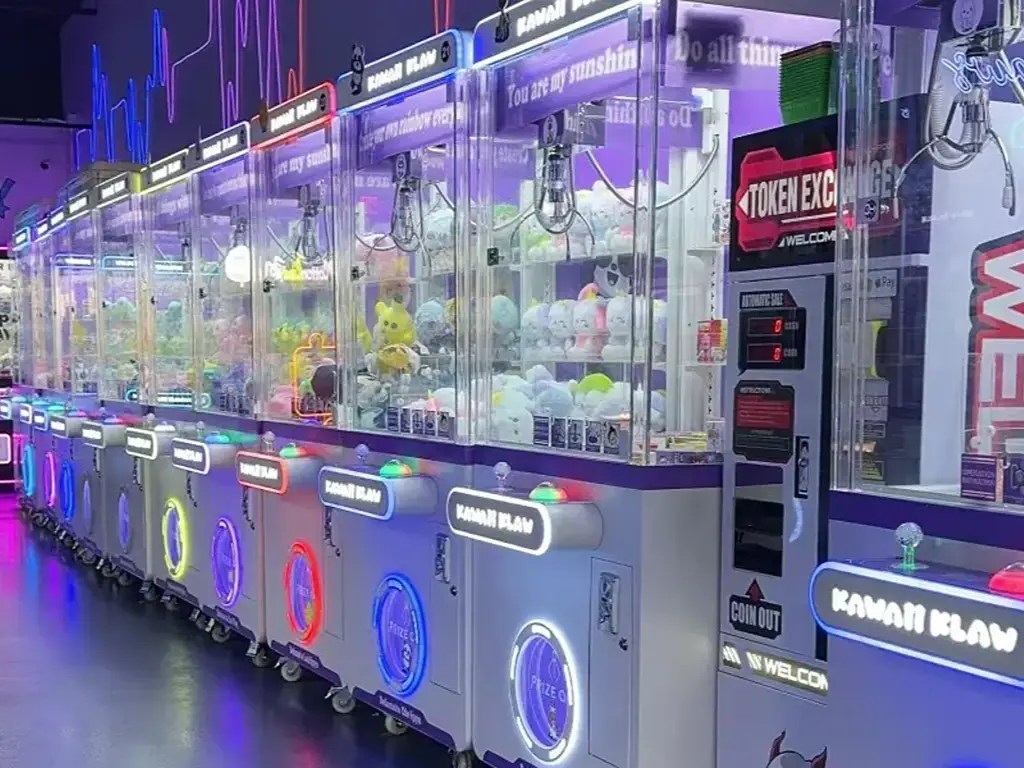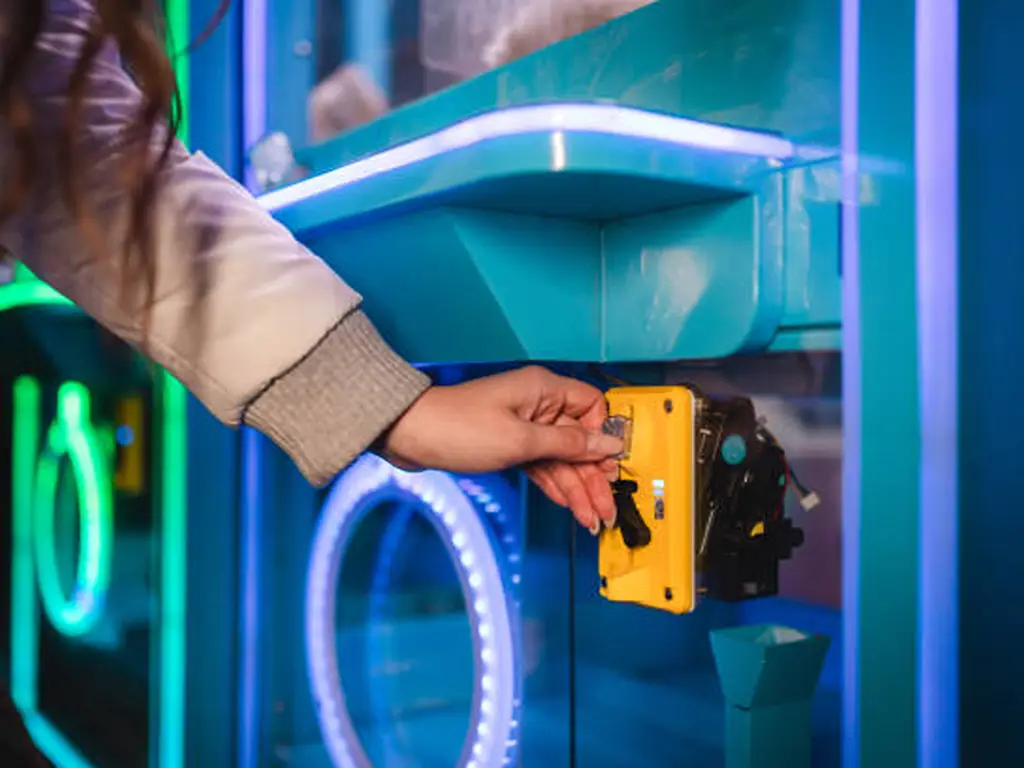The claw machine is a cornerstone of the amusement industry, an apparatus of universal nostalgia. In today’s competitive landscape, لكن, sustained profitability is not a game of chance, but one of calculated business strategy. Every operator faces a fundamental choice: the siren song of a low initial purchase price, or the compounding long-term value of investing in a high-quality, reliable machine.
This report is engineered to provide professional operators—the owners and agents of Arcades, Game Stores, and Family Entertainment Centers (لجنة الانتخابات الفيدرالية)—with a comprehensive, data-driven analysis to navigate this choice. It is not merely a buyer’s guide, but a strategic blueprint for making a smart, profitable investment that ensures your equipment becomes a dependable, revenue-generating core asset.
Part 1: Anatomy of a Champion—Deconstructing the High-Quality Claw Machine
The physical construction of a claw machine is more than functional; it is the most direct, non-verbal communication an operator has with a potential player. A machine’s build quality instantly signals its credibility, the value of its prizes, and the fairness of its gameplay, directly influencing a player’s willingness to engage. A machine constructed from thick steel plate, clear tempered glass, and bright, dynamic lighting conveys robustness and professionalism. Conversely, a flimsy cabinet with scratched panels signals cheapness and neglect, leading players to assume the game is unfair.
| البعد | High-Quality Claw Machine | Cheap Claw Machine |
| Body Material | Thickened steel plate/aluminum alloy frame, anti-collision design | Thin iron sheet or plastic shell, or iron-wood structure, easily deformed |
| Glass/Acrylic | Tempered glass or high-transparency, scratch-resistant acrylic | Ordinary glass or cheap plastic, easily blurred and scratched |
| Claw System | Precision gears + high-precision motor, stable claw strength | Low-end motor + plastic gears, erratic claw strength |
| Circuit System | Industrial-grade mainboard, dust-proof and moisture-proof design | Simple circuit board, prone to short circuits from moisture |
Impact: High-quality machines resist rough handling with a lifespan of over 10 سنين; low-end machines are easily damaged and may be scrapped in 2-3 years.
1.1 الأساس: مجلس الوزراء & Structural Integrity
The difference in materials is a key differentiator. The industry standard for high-quality claw machines is the use of 1.0mm or thicker steel plate or aluminum alloy frames, often treated with an acid-washing process for enhanced durability. This stands in stark contrast to the thin iron sheets (أقل من 0.8 ملم) or plastic used in cheaper machines, which can show severe wear after just 2 ل 3 years of use.
In the choice of transparent panels, tempered glass is the premium option, prized for its superior optical clarity and scratch resistance. Its strength and “explosion-proof” nature provide key safety for high-traffic venues.
أكريليك is a lighter, impact-resistant alternative, but it is easily scratched without a protective coating, which is a significant drawback in commercial settings.
1.2 The Machine’s Heart: القنوات, مخلب & Control System
The machine’s electromechanical core determines its performance. ال high-precision motors and metal gears in high-quality machines ensure stable and consistent claw strength, unlike the low-end motors and plastic gears in cheaper models that frustrate players.
The mainboard (ثنائي الفينيل متعدد الكلور) is the machine’s “مخ”. A high-quality, industrial-grade mainboard is stable and, most importantly, offers
programmability and potential for secondary development. This allows operators to finely tune game parameters. في المقابل, simple circuit boards lack advanced features and are prone to failure. An integrated system, with a quality mainboard, stable power supply (جامعة الأمير سلطان), and certified wiring, is crucial to avoid catastrophic failures.
| البعد | High-Quality Claw Machine | Cheap Claw Machine |
| Claw Strength Control | Programmable claw strength (strong/medium/weak segmented adjustment) | Fixed claw strength or simple strong/weak settings |
| Grabbing Logic | Intelligent algorithms (على سبيل المثال, guaranteed catch counter, random strength) | Mechanical randomness, easily deciphered by players |
| Lights & Sound | Dynamic LED lighting + immersive sound effects | Basic light bulbs + monotonous alert sounds |
| Payment System | Compatible with QR code payment/NFC/membership systems | Coin-only or simple QR code module |
قضية: Kumasaka/Elaut/TONGRU models support “weak-medium-strong” three-stage claw strength, adjusting automatically with prize weight; low-end machines have no logical variation in claw strength, leading to player churn.
1.3 Sensory Appeal: The Allure of Thoughtful Design
A claw machine is an advertisement in itself. متحرك, colorful LED lighting and immersive, themed sound systems are not optional decorations but critical business tools. They attract players’ attention, create an exciting atmosphere, and enhance the perceived value of the prizes inside. This sensory packaging is a core advantage that allows high-quality machines to stand out and drive more plays.
Part 2: The Profitability Equation—A Financial Analysis of Claw Machine Investment
The decision to purchase a cheap claw machine is not a cost-saving measure but an active financial liability. The lower sticker price creates a “financial illusion” that is quickly shattered by hidden costs: higher maintenance fees, revenue loss from downtime, and damage to reputation. These factors lead to a lower and more volatile return on investment (العائد على الاستثمار).
A true financial analysis must be based on the machine’s Total Cost of Ownership (TCO) over its lifecycle. When faced with a machine priced at $400 and another at $1500, the instinct is to minimize initial capital expenditure. لكن, with cheap machines having an annual failure rate over 30% versus under 5% for quality machines, the long-term costs tell a different story. The annual difference in repair and downtime costs alone can exceed $800, quickly offsetting the initial price gap.
2.1 Beyond the Sticker Price: Total Cost of Ownership (TCO)
للمشغلين, TCO is the single most important financial metric. The forecast below provides a detailed comparison of a representative high-quality machine versus a low-cost machine.
| Metric | High-Quality Claw Machine | Cheap Claw Machine |
| Unit Cost | $850-$2,500 | $280-$430 |
| Average Daily Revenue | $30-$70 (high price per play + high traffic) | $10-$28 |
| Lifespan | 8-12 سنين | 2-5 سنين |
| 5-Year Total Profit | $30,000+ (after deducting costs) | $11,000-$20,000 (frequent repairs) |
خاتمة: High-end machines have a payback period of about 6-12 months and higher long-term profits; although cheap machines have low initial investment, hidden costs (repairs + player loss) can consume profits.
2.2 The Hidden Costs of “Cheap”: Downtime & Reputational Damage
Downtime represents a dual loss: no revenue is generated, and the operator’s reputation with both the venue and players is damaged. Cheap machines often use non-standard parts, leading to lengthy repairs. High-quality machines, لكن, feature a modular design, making part replacement quick and minimizing downtime.
| البعد | High-Quality Claw Machine | Cheap Claw Machine |
| Failure Rate | <5% (annual failures) | >30% (especially claw system, coin acceptor) |
| Repair Difficulty | Modular design, easy to replace parts | Messy wiring, requires complete disassembly for repairs |
| Parts Compatibility | Standard interfaces (على سبيل المثال, universal claw heads, mainboards) | Non-standard parts, require custom orders and waiting |
| Energy Consumption | Energy-saving motor + LED (saves 30%~50% electricity daily) | Traditional motor + incandescent bulbs (high electricity cost) |
Data Comparison: Assuming daily revenue of $30 لكل آلة. High-end machine annual repair cost approx. $70, downtime loss $140. Low-end machine annual repair cost $290+, downtime loss $720+.
2.3 The Revenue Multiplier: Pricing Power & Player Loyalty
The financial advantage ultimately comes back to the player experience. A reliable, fair, high-quality machine can command a higher price per play (على سبيل المثال, $3-$5), whereas a cheap machine can only compete with low prices ($1-$2). More importantly, there is a significant difference in player replay rates— high-end machines can achieve over 40%, while low-end machines are often below 15%. This means high-quality machines cultivate a loyal customer base, leading to higher lifetime value and a more stable revenue stream.
Part 3: The Psychology of the Game—Building Trust & Maximizing Engagement
The advanced programmability of modern claw machines allows operators to craft an experience of “dramatic fairness.” This approach builds long-term trust, transforming the game from a potentially frustrating transaction into a rewarding entertainment experience.
| البعد | High-Quality Claw Machine | Cheap Claw Machine |
| Grabbing Feedback | Realistic claw strength, transparent win/loss logic | “Phantom Claw” (auto-release at the top) causes complaints |
| Visual Appeal | Custom theme design + cool lighting to attract players | Monotonous, cheap appearance |
| Player Trust | High replay rate (fair experience) | Low repurchase (suspected of being a “scam machine”) |
| Pricing Power | Can set higher price per play (على سبيل المثال, $3-5/play) | Can only compete with low prices ($1-2/play) |
Survey shows: High-end machine player replay rate can reach 40%+, while low-end machines are often below 15%.
3.1 The Necessity of “اللعب العادل”: Escaping the “Rigged” Stigma
The industry’s biggest challenge is the perception that “all claw machines are rigged.” ال “phantom claw” (where the claw automatically loosens at the top) is the main culprit in destroying player trust. The solution lies in advanced, programmable claw strength logic. Features like multi-stage claw strength and a “guaranteed catch” counter ensure that players will win a prize after a set number of attempts. This technology allows operators to create a game that is both profitable and perceived as fair by players.
3.2 The Science of Attraction: Prize Curation & Visual Merchandising
The machine itself is a retail display case. Prize variety, strategic display, and a bright, clean environment are crucial for maximizing appeal. Operators need to understand their market and choose prizes that resonate with the local demographic. This highlights the value of partners like Tongru, who offer prize procurement services.
3.3 ال “Key Master” Cautionary Tale
SEGA’s “Key Master” lawsuit is a profound lesson. The machine was advertised as a skill game, but its manual revealed a “Compulsory Upper Deviation” feature, making it a game of chance. This case serves as a stern warning about the legal and reputational risks of deceptive game mechanics and advocates for transparent game logic, such as the “Play Till You Win” mode.
Part 4: Navigating the Market—A Guide to Top Manufacturers & Strategic Sourcing
An operator’s choice of manufacturer is a strategic decision that defines their business model. The market can be broken down into distinct tiers, each serving a different strategic purpose.
4.1 The Manufacturer Tiers: From Premium to Value-Driven
- Premium Tier (على سبيل المثال, elaut): Praised for cutting-edge technology and self-regulating claw strength. Ideal for flagship venues where features are the priority.
- Legacy Tier (على سبيل المثال, Sega): Possesses high brand recognition , but operators should perform due diligence regarding past controversies.
- Value-Driven Tier (على سبيل المثال, تونجرو, Wahlap Technology): Positioned as the strategic choice for most operators. These manufacturers provide core quality markers and modern features at a competitive price, creating the best return on investment.
4.2 Matching Mission to Machine: Recommendations for Specific Venues
Matching the machine to the venue is critical for maximizing returns. A high-end mall requires the aesthetics of a premium machine, while a chain FEC prioritizes reliability and ROI, making value-driven machines the logical choice.
| Venue Type | Core Needs | Recommended Tier | Example Brands/Models |
| High-End Malls / Theme Parks | Top-tier aesthetics, brand image, high price-per-play, unique experience | غالي / Legacy | elaut (على سبيل المثال, E-Claw series), Sega, Kumasaka |
| Chain Arcades / لجنة الانتخابات الفيدرالية | High reliability, cost-effectiveness, ease of maintenance, strong ROI | Value-Driven / ROI-Focused | تونجرو (تونجرو), Wahlap Technology, Xingnaiji, Smart Industries |
| Cinemas / Bowling Alleys / Restaurants | Visual appeal, medium traffic, stable operation, small footprint | Value-Driven / ROI-Focused | تونجرو (تونجرو), ICE, Coastal Amusements |
Part 5: Future-Proofing Your Operation—Embracing Technology & Strategic Partnership
The future of arcade operation lies in the transition from an offline, cash-based model to a networked, data-driven one. A claw machine is no longer just a box of prizes; it is a networked terminal. Manufacturers who provide an entire ecosystem—including payment integration, data analytics, and comprehensive support—offer their partners a significant competitive advantage.
5.1 The Cashless Revolution & The Connected Arcade
Modern payment systems are a necessity. Installing cashless card readers can lead to astonishing sales growth (أ 320% increase in one case study). Beyond payments, the telemetry and remote management technology these systems provide are key to scaling a business efficiently. Operators can remotely monitor machine performance, track inventory, and identify faults, enabling a proactive and optimized business model.
5.2 The Power of Partnership: The One-Stop Solution Model
The choice of a manufacturer is the most critical strategic partnership an operator can make. Partnering with a company like Tongru, which offers end-to-end services, provides clear advantages:
- التخصيص (OEM/ODM): Tailoring machines to specific themes or brands.
- Integrated Solutions: Including venue layout design, prize procurement, and management systems.
- Global Support: Offering a 1-year warranty and lifetime maintenance service, ensuring the long-term value of the investment.
Success in the modern claw machine market is about investing in quality, understanding the player, leveraging technology, and choosing a partner committed to your long-term profitability.
خاتمة
The decision of which claw machine to purchase transcends a simple comparison of initial costs; it is a foundational strategic choice that dictates the long-term profitability and reputation of an operator’s business. The financial data is unequivocal: while a cheap machine offers a low barrier to entry, its profits are consistently eroded by hidden costs from frequent repairs and player churn due to a frustrating experience. في المقابل, a high-quality machine is a robust long-term investment. With a typical payback period of just 6 ل 12 شهور, its superior reliability, enhanced player experience, and longer lifespan result in significantly higher and more stable long-term profits.
لكن, the most effective strategy involves not just choosing quality, but choosing the يمين quality for the right environment. Matching the machine to the venue is critical for maximizing returns:
- For high-end malls and theme parks, where brand image and high customer spend are paramount, investing in premium brands like Kumasaka, elaut, and SEGA is the optimal choice. These machines can support higher prices per play and enhance the location’s prestige, often through IP collaborations.
- For chain arcades and dedicated claw machine stores, the focus shifts to durability, reliability, and cost-effectiveness. هنا, value-driven brands such as Wahlap Technology, TONGRU, and Xingnaiji excel, offering stable product quality and a high return on investment, making them the strategic choice for scaling operations profitably.
أخيرًا, the path to sustained success lies in a nuanced approach: investing in quality to ensure player trust and operational uptime, while strategically selecting the right tier of machine to align with your specific business model and venue requirements.












